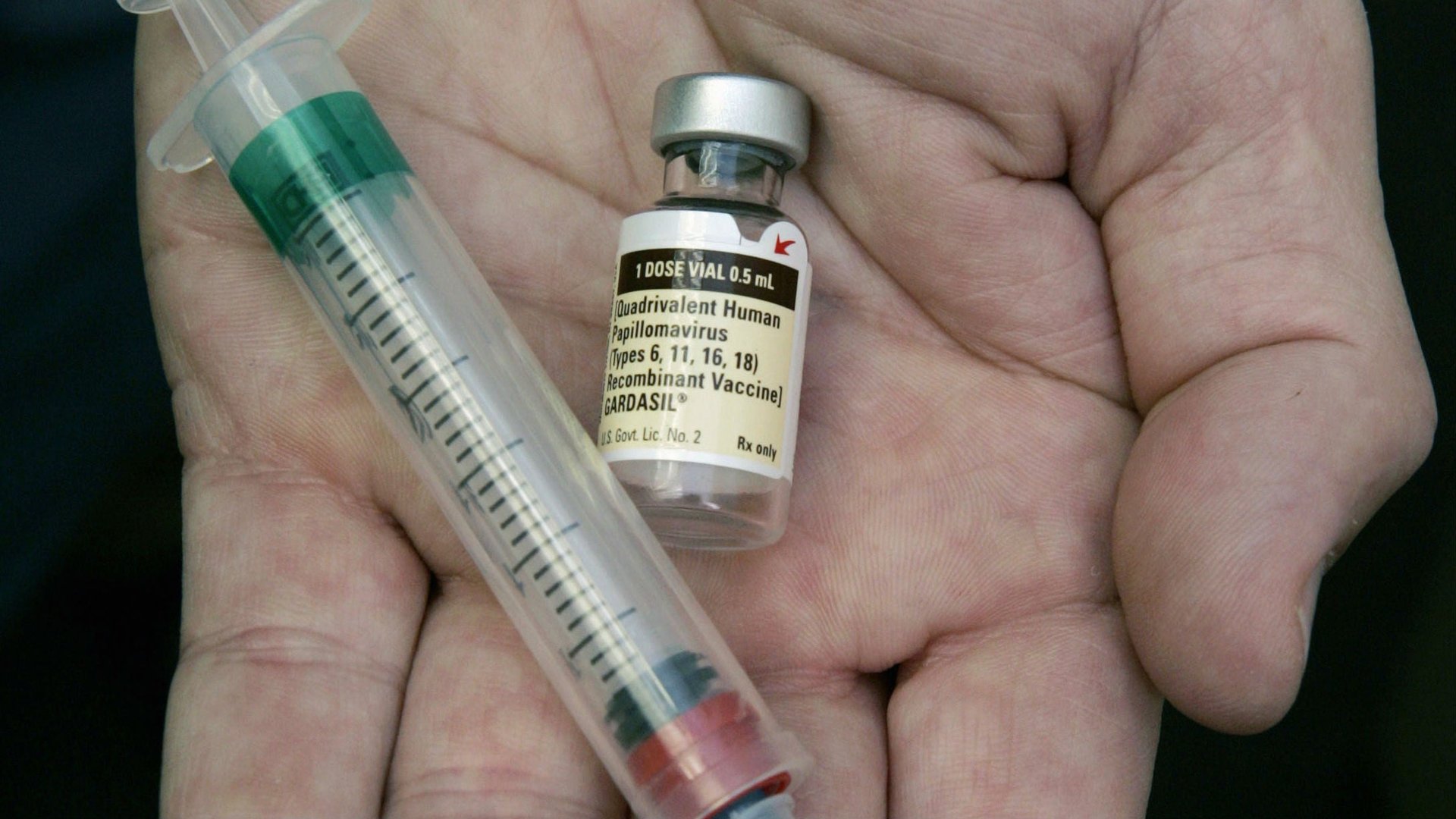The HPV vaccine is not recommended for US boys as often as it is for girls
A vaccine exists to prevent a virus that can lead to certain types of cancer, but many American parents aren’t getting it for their kids.


A vaccine exists to prevent a virus that can lead to certain types of cancer, but many American parents aren’t getting it for their kids.
The human papillomavirus, or HPV, is sexually transmitted, though benign in most cases. The HPV vaccine, manufactured by Merck Pharmaceuticals, protects against four strains of the virus, including two that cause warts and two that can lead to cancer. The vaccine is recommended by the US Centers for Disease Control for all children aged 11 to 12.
Except many parents aren’t aware of that recommendations—especially parents of boys. In a recent analysis of a 2015 CDC-conducted National Immunization Survey for teens presented at a meeting of the Society of Gynecologic Oncology, researchers found that 20% of parents of boys who had not received the vaccine had not been told by their primary care providers that it was necessary. The same was true for about 10% of parents of girls who had not been vaccinated.
“It is clear that physicians need to give a strong recommendation to both parents of boys and girls,” Anna Beavis, an oncologist at Johns Hopkins University who conducted the analysis, told the American Journal of Managed Care.
There are upwards of 40 strains of HPV, which is present in about a quarter of all people. Most people don’t recognize they have the virus, which the body often can clear on its own. However, there are some types of high-risk HPV that can lead to cervical, anal, penile, and throat cancer in men and women.
The HPV vaccine comes in two parts, the first of which includes two shots given six months to a year apart. Ensuring that all eligible children receive both parts of the vaccine would protect them from contracting high-risk strains of HPV, and would prevent them from unknowingly spreading them to (future) sexual partners. In the US, estimates suggest that about 29,000 cases of cancer would be prevented if HPV was never contracted. (These cancers can all develop in people without HPV, but those cases are in the minority.)
Although the CDC set a goal to have 80% of children vaccinated by 2020, Beavis found that current rates are only about 50% of boys aged 13 to 17, and 63% of girls in the same demographic. That puts the US far behind other countries that have excelled in HPV prevention. Australia, for example, has had a nationally funded program that began in 2007 (paywall). Since then, almost 80% of girls and 73% of boys have received the vaccine, and cases of genital warts and cervical abnormalities—the precursor for cancer—have dropped dramatically.